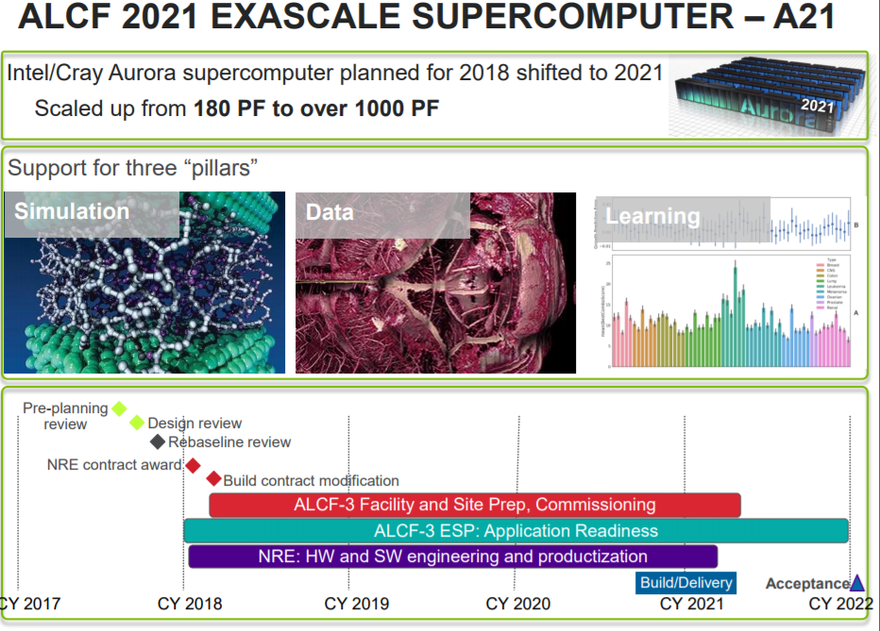Intel and Cray are set to build the United States’ first exascale supercomputer at the Argonne National Laboratory, with a target delivery date of 2021.
‘Aurora’ was originally set to be released in 2018 as a 180 petaflop pre-exascale project, but it appears the two companies were struggling to meet the deadline. Instead, the contract has been extended by three years and the target capability expanded to 1,000 petaflops (1 exaflop).
Good luck
The original plan for Aurora was to be based on a Cray Shasta system featuring the upcoming Knights Hill processor, but it is not known whether the exascale system will use the same building blocks.
Sources told The Next Platform that the architecture is less a novel approach to computing - like quantum computing or neuromorphic chips - and more of a “reimagined” way to design chips.
HPC Wire reported that a number of people at the Department of Energy were not pleased with Intel as the prime contractor and Cray as the subcontractor.
The partners were expected to miss their target next year, with the scientific community said to have been counting on its delivery. Canceling the project or opening it up to new bidders would have caused even more delays.
The pre-exascale version was announced alongside the ’Summit’ supercomputer from IBM, Nvidia and Mellanox, a ~200 petaflop system that could become the world’s most powerful supercomputer when it launches in early 2019.
The DOE has also awarded $258 million in funding to AMD, Cray, HPE, IBM, Intel and Nvidia over the next three years as part of the PathForward program, itself part of DOE’s Exascale Computing Project (ECP), in an effort to push for several different architectural approaches to exascale systems.
China, America’s closest HPC rival, is meanwhile set to develop “a prototype of an exascale computer” by the end of this year, to be used for the country’s maritime expansion.
“A complete computing system of the exascale supercomputer and its applications can only be expected in 2020, and will be 200 times more powerful than the country’s first petaflop computer Tianhe-1, recognized as the world’s fastest in 2010,” Zhang Ting, application engineer at the Tianjin-based National Supercomputer Center, told state-owned publication Xinhua in June.
The EU plans to create its own exascale prototype based on the ARM architecture, built by French IT giant Atos, and this month pledged €20m in funding for relevant research initiatives.


